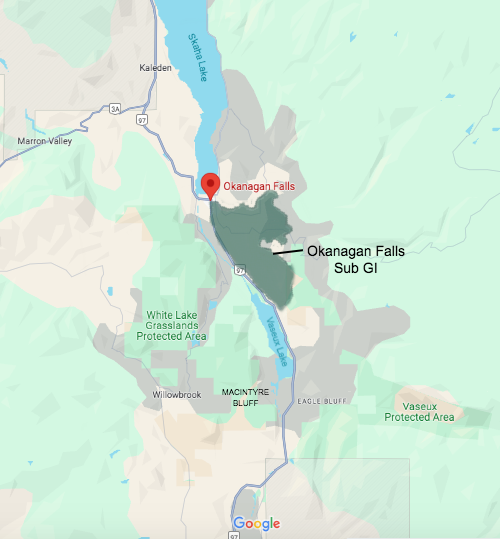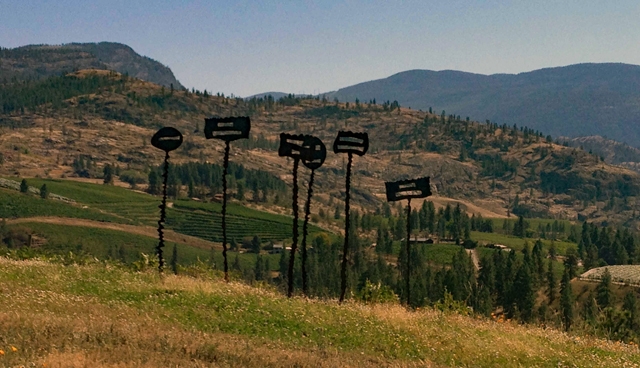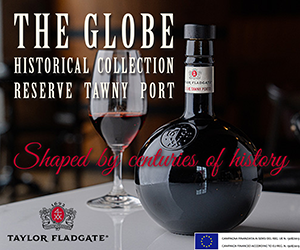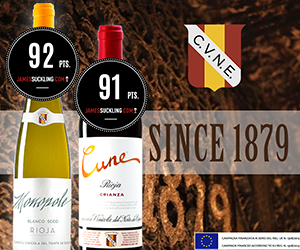British Columbia wine regions are currently broken up into nine Geographical Indications similar to appellations used in other countries.
These G.I.s are determined by analyzing similar soils, climate, annual weather, etc. The Okanagan Valley G.I. is further broken down into sub-Geographical Indications (sub-GIs), including the one for Okanagan Falls, created in 2018. The 800 hectares of the Okanagan Falls Sub-GI (150ha of vines) stretches roughly from Peach Cliff in the North to Vaseux Lake in the South and from approximately Highway 97 in the West to the steep granite hillsides in the East with an elevation that ranges from 400m to 500m.

The Okanagan Falls sub-GI is home to various pinot noir styles, including some of the province's best pinot noir labels. In many ways, Okanagan Falls marks a pivot point in the nature of the wines and vineyards in the Okanagan Valley. It's generally agreed that Okanagan Falls is the northernmost point in the valley where Bordeaux variety grapes consistently ripened., but for me, it is where the more interesting, higher-quality pinot noir wines begin.
The climate is undoubtedly cooler in OK Falls than further South around Oliver and Osoyoos and that relative coolness is more favourable to the pinot noir grape. Several geographic factors contribute to the cooler atmosphere, beginning with a dramatic narrowing of the valley presided over by a trio of rock monoliths, including 673 M high McIntyre Bluff and Eagle Bluff. This narrowing undoubtedly affects the wind flow patterns as air moves North through the narrow gap, across Vaseux Lake and into the vineyard areas of Okanagan Falls.
Blue Mountain
Blue Mountain Vineyard & Cellars is the pioneering pinot noir-producing winery in Okanagan Falls. Founded by Ian and Jane Mavety in 1971, they bought a languishing farm with fruit trees and hay fields. Initially, they planted hybrid grape varieties consistent with those generally grown in the rest of the Okanagan. They were only grape growers supplying grapes to existing wineries for their first few decades. Their bend towards quality began in the mid-1980s when they began switching their hybrid varieties to European vinifera.
This move was accelerated by the government-subsidized pullout of hybrids in favour of higher-quality varietals that began in 1988, in advance of the free trade agreement with the U.S. They shifted to creating their winery in 1992 when they released their first pinot noir from the 1991 vintage. Very few B.C. wineries can claim continuous grape production for over fifty years by one family.
Subsequently, they planted a lot more pinot noir in 1990 and 1991, including six different pinot noir clones. The long history and pursuit of quality have involved innovation and evolution. A section of the new pinot noir plantings was installed at twice the Okanagan's typical density. Blue Mountain has always used 100% estate-grown grapes in its wines throughout its production.
In 1997, the Mavety's son, Matt, began to manage the vineyard, winemaking, and cellar. In 2007, the vineyard was further extended. Further innovation in the quality of the wines has been achieved partly through changes in wine transfer, bottling the wines unfined, a progressive move to native yeast fermentation and lighter pressing. Their sustainable and organic practices include carefully selected cover crops, manure composting, organic fertilizers, and diverse flora and fauna.
The family's close familiarity with their vineyards eventually demonstrated that three areas consistently showed particular pinot noir elements. The first release of these very distinct single-vineyard blocks, Gravel Force, Wild Terrain, and River Flow, was in 2017.
Code Wines
Code Wines is a relative newcomer to the Okanagan Falls Sub-GI. Shay and Harlee Code founded their dream in 2016 on a 5-acre parcel on the East side of Peach Cliff, the 600 m—high wall of granite rock that dominates Okanagan Falls.
With a degree in commerce, Shay had spent three decades in corporate jobs in Canada. On an assignment in France, he immediately became enamoured with Rhone wines and then with wine generally. Searching for suitable vineyard sites led to an unusable remnant of land from a housing development. Though in a proven vineyard area, the plantable land on it had been generally deemed too small to support a viable winery.
The planting of chardonnay and pinot noir vines started in 2017. Beginning in 2019, the Roches of Roche Winery helped make the first three vintages at their facility in Penticton. During this period, the winemaking gradually shifted from Dylan Roche to Shay.
From the start, there has been a focus on clonal selection with four separate pinot noir vineyard blocks - Dijon 115, 777 and Pommard 91. Most interesting is the inclusion of a clonal block whose identity is unknown, which Shay calls Ancestor 01. The cuttings came from around the corner of Peach Cliff at Meyer Family Vineyards. The unidentified clone grows in Meyer's Old Block vineyard and was resident when the Meyers purchased the formerly winery property.
In some vintages, Code Wines has chosen to vinify and bottle pinot noirs from the four clones separately, as well as an estate blend version. The opportunity to taste wines from four different clones of pinot noir grown and vinified identically is like catnip for pinotphiles. Comparing the Code and Meyer versions of the ancestor 01 clone should be particularly interesting. The winery focuses on organically farming the grapes that their five acres produce. Production will likely range between five hundred and a thousand cases. There is no current plan to expand production beyond that.
Liquidity
The precise, contemporary, minimalist design of the winery building at Liquidity Wines belies a history of over 50 years. It was initially a 110-acre fruit orchard created by an engineer named Charlie Oliver and named Oliver Ranch. Some of the irrigation systems created back then are still utilized.
In 1971, a thirty-acre parcel split from Oliver Ranch formed the basis of the modern-day winery property. Rolland and Heidi Hellar purchased it in 1991. Called Adelheid's Vineyard, it grew hybrid varieties. 1991 saw the start of planting all vinifera grapevines, including some pinot noir.
Liquidity Wines began when a group of investors, led by Ian MacDonald purchased the property in 2008. Existing buildings were renovated to create a tasting room and bistro that takes full advantage of a view descending from Noble Ridge Winery to Vaseux Lake. A proper winery was designed, and its first vintage was produced in 2012. A second estate vineyard was added in 2014 with the purchase of a contiguous Okanagan Falls vineyard property. Just over a third of the 12-hectare vineyard is planted to five clones of Pinot Noir: 115, 667, 828, 777 and 114.
Liquidity's first two small vintages, in 2010 and 2011, were made by Matt Holmes, the former winemaker at Tantalus Vineyards, and they showed very well. Beginning in 2015, Alison Moyes, who had previously done stints at Osoyoos Larose Winery and Stoneboat Vineyards, helmed the winemaking. The current winemaker is New Zealand native Amy Paynter.
In March 2020, Liquidity was purchased by Iconic Wineries, one of Anthony von Mandl's companies. His other Okanagan wineries include Mission Hill Family Winery, Martin's Lane Winery, CheckMate Wines, CedarCreek Estate Winery and Road 13 Vineyards.
Meyer Family Vineyards
Good fortune seems to have followed JAK Meyer into the wine industry, although he has effectively worked his luck. An interest in drinking good wine led to a chance meeting with Master of Wine James Cluer. JAK (an acronym of his initials) had become interested in beginning a winery, and Cluer agreed to help him navigate the process. And so it began.
In 2006, Meyer purchased a vineyard planted to chardonnay and, with the help of winemaker Michael Bartier made a couple of vintages of chardonnay at Road 13, where Bartier was heading up the winemaking. The success of the chardonnays, which were well reviewed (by no less than Steven Spurrier), encouraged Meyer further down the road to launch his winery.
Serendipity provided the opportunity in 2008 to buy an existing winery that had gone bankrupt. It had established vineyards that included plantings of pinot noir and was also in Okanagan Falls. At about the same time, Chris Carson, a New Zealand-trained Canadian native, was returning to Canada. His winemaking resume included time at the legendary California pinot noir producer Calera Wines, as well as Burgundy and New Zealand. JAK engaged Chris as his new winemaker, beginning with the 2008 vintage. Meyer currently produces five different pinot noirs and has, over the years, made single-vineyard pinot noirs using non-estate grapes. The terroir, combined with low-intervention winemaking, produces pinot noirs that are a benchmark for quality. The world seems to agree. Meyer pinot noirs can be found on wine lists in London, Montreal, New York, and Marks and Spencer outlets in the U.K.
Stag's Hollow
Stag's Hollow was founded by Larry Gerelus and Linda Pruegger in 1992, at the beginning of the modern era of B.C. wine when there were only about 30 existing wineries. They established the Stag's Hollow home vineyard and built it over the next fifteen years. In 2011, another 18 acres of raw land was purchased 2km North of the home vineyard. This Shuttleworth Creek Vineyard is named for the creek that runs through it, and much of it was planted to a variety of pinot noir Dijon clones. The new terroir and the expanded clonal varieties gave a new range of options for crafting their pinot noirs.
You might guess that Stag's Hollow was simply a fanciful winery name and that a "hollow" was a clearing at the bottom of a hill or some other similar geographical feature. Not so. A hollow is another name for a kettle, i.e. a large hole, like a giant kettle, formed when chunks of glacier melted under the deposited soils at the vineyard 12,000 years ago. Stag's Hollow vines, including pinot noir, are planted on the steep sides of the kettle, giving them excellent sun exposure. It is just one of the remarkable geographical features in the Okanagan Falls area that gives the wines such variety.
The current winemaker, Keira LeFranc, was born and raised in Penticton and took over from Dwight Sick in 2018. Larry Gerelus and Linda Pruegger sold the winery to Eric Liu, the owner of Bench 1775 Winery, in 2019. Still, they remained as managers, leading the team until April 2021, when they retired.
For more on B.C. Pinot Noir; BC Pinot Noir Sub-GI Series - Gismondi on Wine.

 quicksearch
quicksearch






